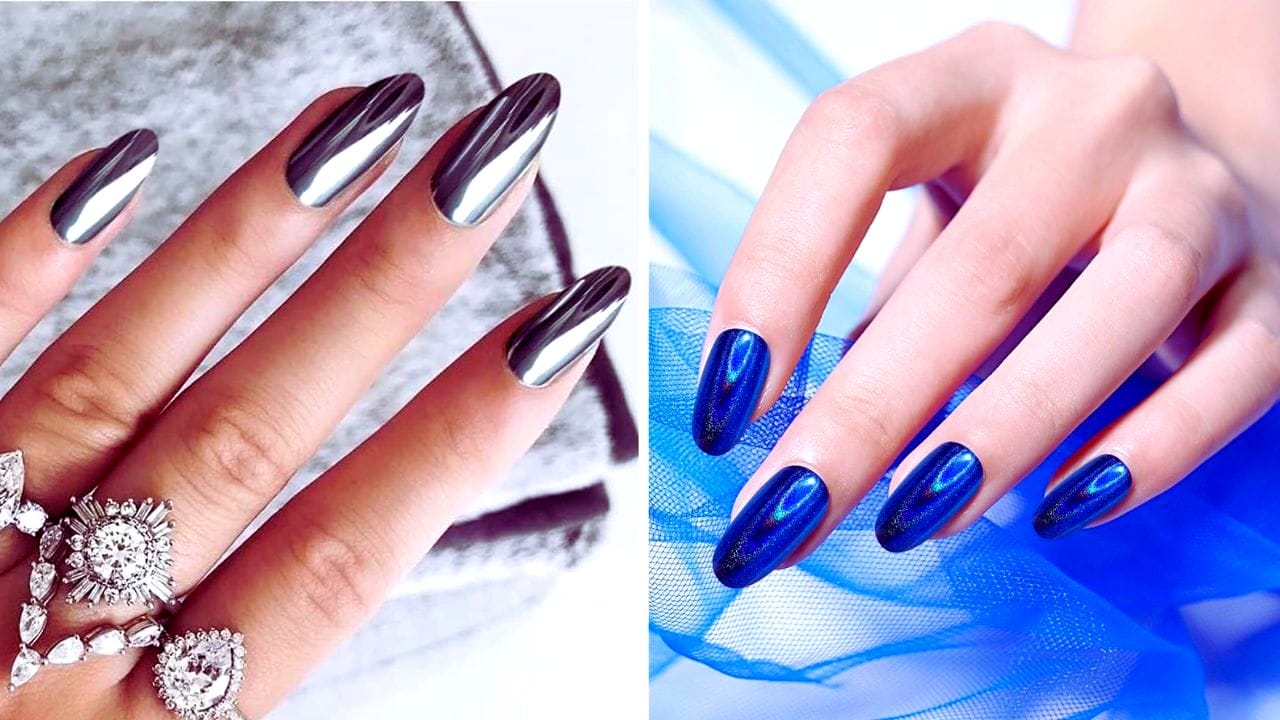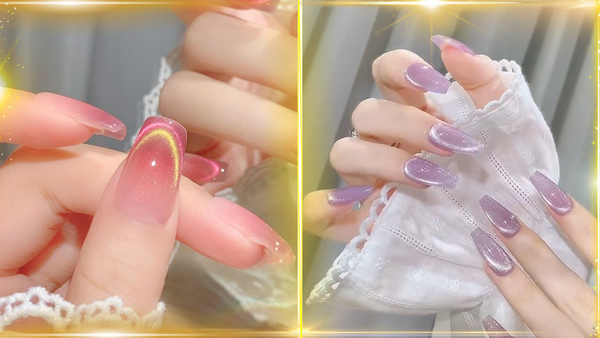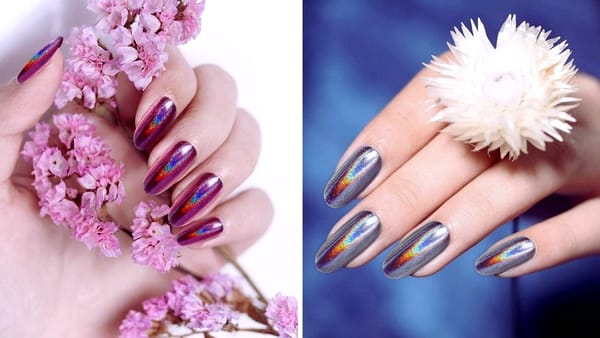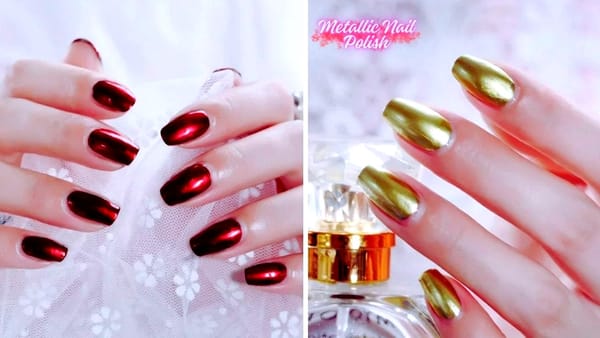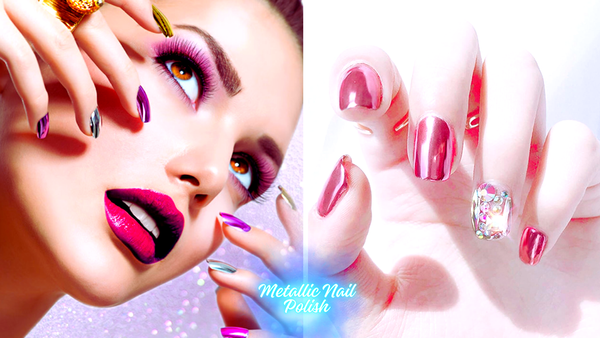Nail polish has transformed from a basic beauty staple to a fashion statement, with trends constantly evolving. Among the most captivating styles are chrome and metallic nail polishes, each offering a unique allure to your manicure. But what sets them apart?
Key Takeaways:
- Understand the distinct visual effects of chrome and metallic nail polishes.
- Learn about the application techniques for both types of polish.
- Discover how to choose between chrome and metallic polishes for your desired nail look.
The Basics of Chrome and Metallic Nail Polish
Regarding nail art, the terms "chrome" and "metallic" are often used interchangeably, but they refer to two different finishes. Chrome nails are known for their mirror-like shine, achieved by rubbing chrome powder onto a gel top coat. This creates a reflective surface that resembles a chrome finish on a car. On the other hand, metallic nail polish is a lacquer infused with metallic particles, giving your nails a shimmering effect similar to metallic paint on a canvas.
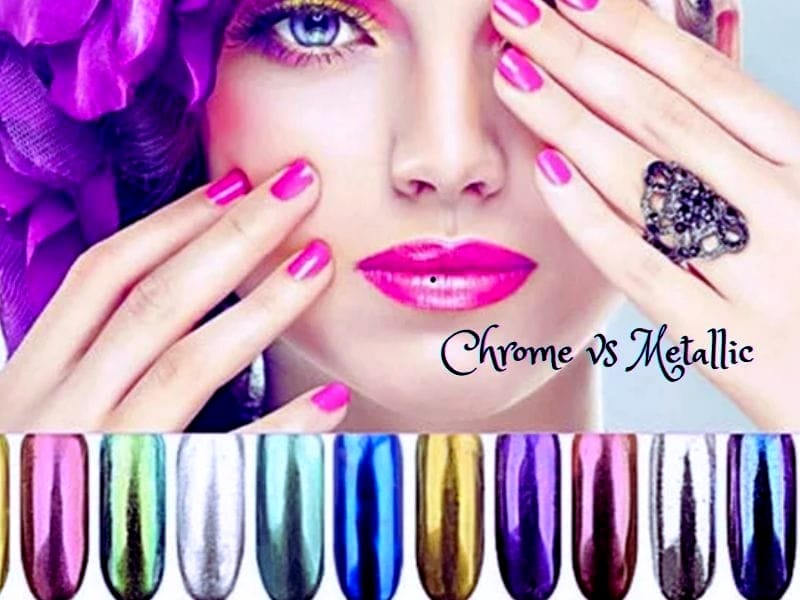
The Chrome Effect: More Than Just Shine
Chrome nails are not just about the high shine but about achieving an actual mirror effect. The process involves applying a gel base color, curing it under an LED light, and then carefully rubbing chrome powder onto the surface. The powder adheres to the sticky layer of the gel top coat, transforming into a smooth, shiny surface that reflects light like glass. This chrome effect is what sets it apart from metallic polishes.
Metallic Nail Polish: A Shimmering Alternative
Metallic nail polish, while still offering a shine, provides a more subtle shimmer than a mirror-like reflection. It comes pre-mixed with fine metallic particles that catch the light, creating a lustrous finish. Unlike chrome nails, metallic polish is applied like regular nail polish, typically requiring two coats to achieve full coverage and the desired metallic look.
The Application Showdown: Powder vs. Paint
The application of chrome powder requires a bit more skill and patience compared to metallic nail polish. After the gel polish and top coat are cured, the chrome powder must be gently rubbed onto the nail with an eyeshadow brush or a similar tool. This step is crucial to create the chrome effect. Metallic nail polish, however, is brushed on like any other polish, making it a more straightforward option for DIY manicures.
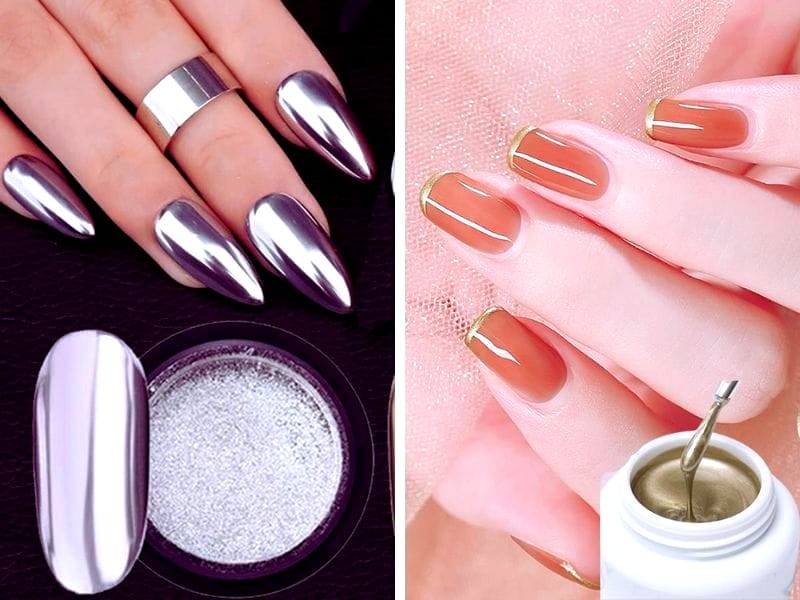
Durability and Longevity: Which Lasts Longer?
Chrome nails, when sealed with a gel top coat and properly cured, can last up to two weeks without chipping. The durability of metallic nail polish can vary, but it generally does not last as long as a gel-based chrome manicure. However, with the right top coat and careful application, metallic nails can still provide a long-lasting nail look.
The Visual Impact: Reflective vs. Lustrous
In direct light, chrome nails exhibit a dramatic mirror effect that is hard to miss. They reflect their surroundings and can even create a holographic polish look when combined with different shades of chrome powders. Metallic polishes offer a more toned-down shine with a shimmer that's eye-catching but not as reflective as chrome. This makes metallic polish a versatile choice for those who prefer a less bold statement.
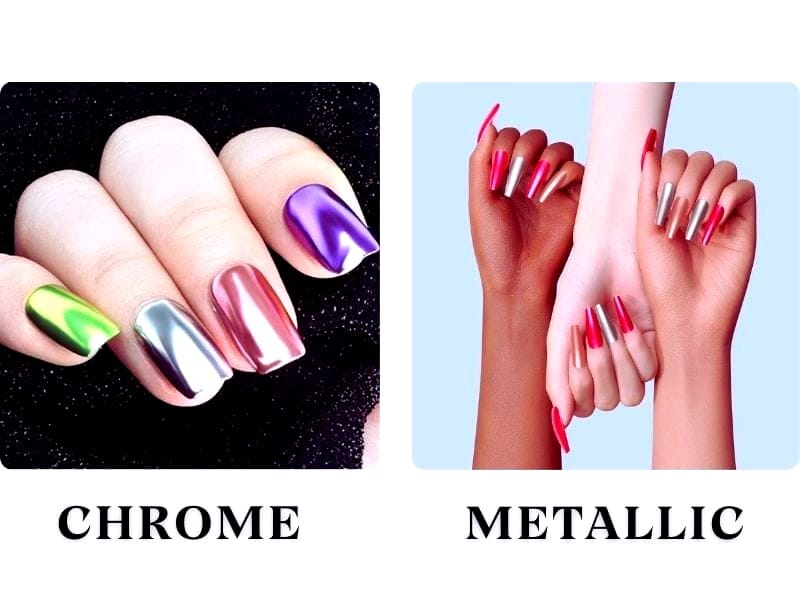
Trendsetting Tips: French Manicure with a Twist
For those looking to incorporate these trends into a classic style, consider a chrome or metallic French manicure. Chrome powder can be used to create metallic French tips with a high-shine twist, while metallic polish can add a modern shimmer to the traditional French tip look. Both options offer a fresh take on a timeless nail art design.
The Color Spectrum: All the Colors and Shades
Chrome powders and metallic polishes come in a variety of colors, from silver and gold to iridescent and holographic shades. Chrome powders often require a specific base color to achieve the desired effect, while metallic polishes can be layered over different base colors to create a similar look. This versatility allows for endless creativity in nail art designs.
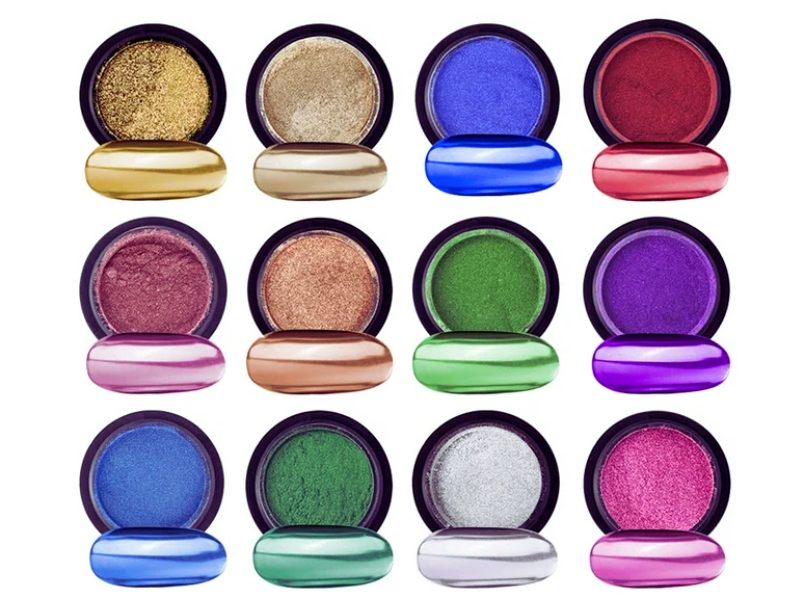
Nail Art and Beyond Creative Uses
Beyond a full nail coating, both chrome powders and metallic polishes can be used to create intricate nail art. Chrome powders can be used to add accents or details to a manicure, while metallic polishes can be used for stamping or freehand designs. The possibilities are only limited by your imagination and artistic skill.
The Final Seal: Top Coats and Finishes
To ensure the longevity of your chrome or metallic manicure, a top coat is essential. For chrome nails, a gel top coat is necessary to seal in the powder and prevent chipping. Metallic polishes can be finished with a regular top coat, but for added durability, a gel top coat can also be used. Both finishes should be cured under an LED light for the best results.
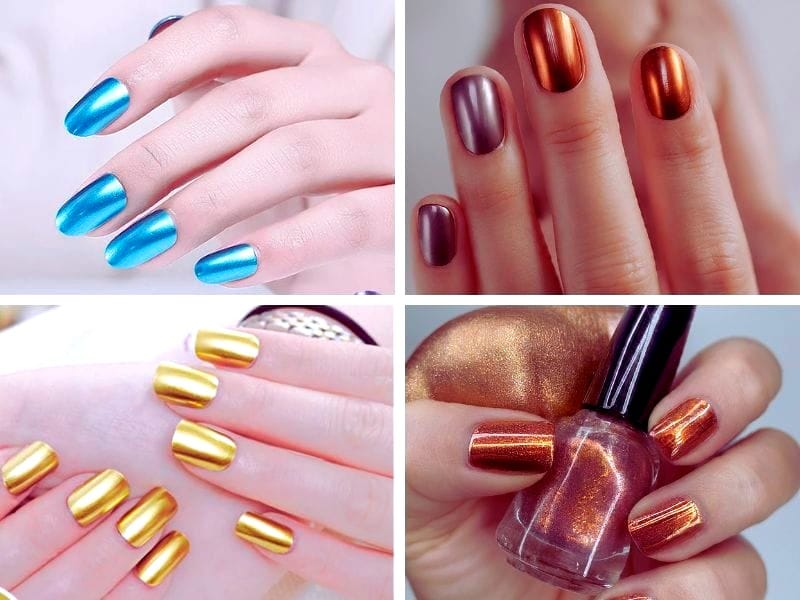
Summary
Chrome and metallic nail polishes offer two distinct paths to a dazzling manicure. Chrome nails provide a mirror-like effect with a high shine, while metallic polishes offer a more subtle shimmer. The application process, durability, and visual impact differ between the two, giving you the option to choose based on your style and the occasion. Whether you opt for the reflective allure of chrome or the lustrous glow of metallic, your nails are sure to stand out.
FAQ Section
Can I achieve a chrome effect with regular nail polish?
No, the chrome effect requires a gel polish base and a gel top coat to properly adhere to the chrome powder and achieve the mirror-like finish.
Is metallic nail polish easier to apply than chrome powder?
Yes, metallic nail polish is applied like regular nail polish, making it more user-friendly for those who prefer DIY manicures.
How can I remove chrome or metallic nail polish?
Chrome nails require soaking in acetone to remove the gel polish and powder. Metallic nail polish can be removed with regular nail polish remover, though if a gel top coat is used, soaking may also be necessary.
